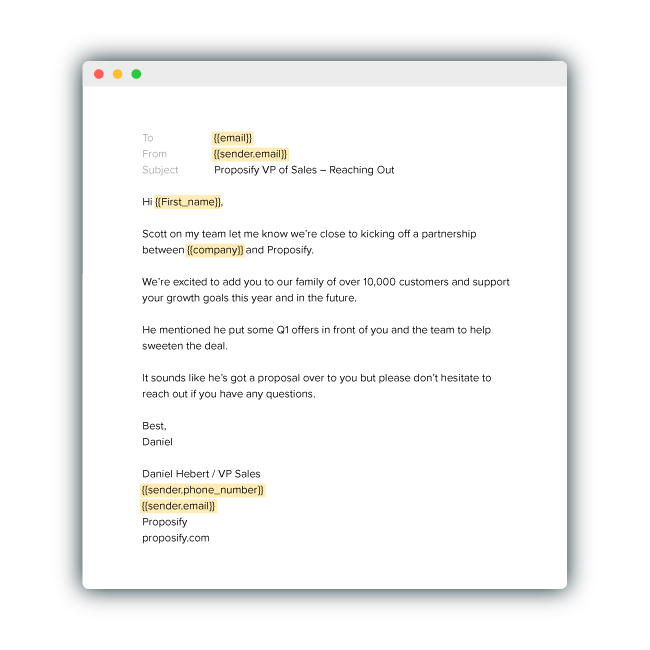
Deal Hacker: 3 Sales Operations Strategies to Avoid Deals Stagnating at the Closing
Have you noticed that more of your deals are getting stuck in the proposal stage?
If it’s not a rep problem, then the process is flawed.
It’s common to focus too much on the top of the funnel and neglect bottom-of-the-funnel tactics.
But closing is a process and can be optimized like other aspects of sales.
Three sales operations deal hacker tactics that your sales team should employ
Sometimes salespeople get stuck and need help getting the deal closed. Here are three ways that we can use to keep them on track with their deals: 1) Provide coaching training in closing skills, 2) Improve resource availability for reps at the bottom of the funnel (e.g., provide more phone support), and 3) Help make sure there is a clear path from qualification to closure.
Deal Hacker #1: Enhance the deliverable: What are your representatives sending?
One of the first things you can do to combat a stalled proposal is asking yourself, “are there gaps in my sales ops activities that may contribute to deals getting stuck?”
We’re not just talking about the figurative pipeline. We mean being blocked by spam filters.
At the close stage, your prospects might be quiet because they haven’t seen all of the documents that reps send. To fix this problem you need to look at both what reps are sending and how it is sent in order to optimize for deliverability.
First, the how.
When you’re sending someone a link, make sure it’s an informative one.
When they email a link to an online proposal document, make sure it’s from a reputable domain. If not, the spam filters will catch it.
If you link to a Google Doc, Sheet, or Slides where the permissions are set so that it can’t be accessed by people outside of your organization, there will be problems. This is because these documents cannot easily be shared with other members in your company who need access.
If your company is big on cold emails and you’re getting close to the limits of what you can send in a week, then it’s important that your Outreach be set up properly.
When attaching files to an email, make sure the file size is less than 10MB.
If your closing documents are in Word, PDF, PowerPoint or Excel formats and attached to an email that they’ve sent you, make sure the size is manageable. Too big of a file will end up in their spam folder instead of getting delivered into their inbox.
What I’m trying to say is this: what should the deliverable be? One workaround for file size might be sending a smaller document.
But if you want to actually close deals, don’t do that. Proposify found that proposals with compelling designs and other assets can increase your team’s closing rate by up to 26%.
To avoid getting your proposals rejected because the file is too big, do these three things:
- Compress the files of your reps in order to make sure they don’t get flagged. Compresses them but still preserves what is compelling about their closing documents.
- The best way to do this is by sending a link, whether it’s an online document or your own website. The most important part of the process is configuring the account correctly.
- Proposal management software allows you to build proposals online, so file size isn’t an issue. As the link is associated with your domain and not hosted on some other site that takes up space, your prospect’s email server treats the links as if they were a link to one of their own websites.
You can’t just give your salespeople a list of prospects and send them to the task, you need to make sure what they’re sending is optimized for deliverability.
Deal Hacker #2: Check your metrics: what’s happening after the proposal is sent?
With the COVID system, deals are moving more quickly through a closing stage.
We have the data to prove it:
- In 2020, the median time for a prospect to open an email after it was sent is 74 minutes. This means that 18% of prospects are opening emails faster than they did in 2019.
- When it comes to proposals, 44% of the time was shaved off with this new method.

It’s important to establish the baseline for your team, which will help you identify warning signs when a deal isn’t going well.
The average person takes 12 seconds to open an email.
A prospect can take anywhere from minutes to days before they respond.
When you know this number, you can set up an event in your sales process to send a friendly reminder email if they haven’t opened the proposal within that timeframe.
You can start to build a data-backed cadence from proposal to close with the information given.
How long does it take for a door to open and close?
Our data shows that the median time between when an opportunity opens and it getting closed is 51.4 hours or two days.
You need to track this for yourself. Once you know, set a follow-up trigger. Say 55 hours have passed since your rep sent a proposal to a prospect and most deals close within that time frame – but not with this one. This is where you build an important task into the closing sequence of your reps so they can check-in and see what’s going on.
If you find yourself too busy to get any proposals done, consider cutting back on some of the other tasks that are taking up your time.
Sometimes it’s not good to have any activity on your proposal. It may seem like a blessing, but in reality, an unexpected change can lead to problems.
The average winning proposal is viewed only 2.5 times before the prospect decides to sign it.
When deals don’t close, they get more attention than those that do.
If your proposals are getting opened again and again, or by stakeholders who shouldn’t be involved in the process, it means something is wrong.
The number of times a proposal is viewed can be just as different for you and your industry to track. They could be counterintuitive, like the numbers above.
Once you have the data, your activity triggers are set.
If you know your deal docs get opened an average of six times before the prospect signs, make sure to plan another high-importance task for them as soon as they open it for the seventh time.
Do not be afraid to pull out the big guns if you are still stuck in your deal.
If the proposal is still not approved, try to get executive support.
Recently, the CEO of Proposify called one of our AE’s prospects to offer his assistance in getting a contract signed. The call helped push the prospect over the line and secured a signature.
You can set up everything in advance and automate it so you don’t have to rely on a busy executive’s schedule.
If the tactics above haven’t been successful, here is an example of what my team would do:

My account executives send this email as a last resort when they can’t get the deal unstuck. I don’t even need to be involved.
Deal Hacker #3: Involve new stockholders: to whom are your representatives submitting proposals?
Your reps need to contact people who haven’t already been contacted about the deal.
If they only have one contact on the opportunity and are selling to a buyer committee, it’s very likely that deal will never get past proposal stage. There aren’t enough people engaged.
Operations and enablement are critical to the success of diversity initiatives.
- Building a sequence of phone calls and emails based on who your reps are sending proposals to.
- The number of contacts it takes to close a deal.
- If the project doesn’t have enough stakeholders involved by the proposal stage, it should warn you.
Is it better to sell directly with no one else, or is it more effective if the decision-maker has a champion?
If you’re not tracking your contact roles, it can be a challenge to know what your team is doing.
You need to know who your reps are sending proposals. Are they just forwarding the proposal, or do they have a direct line of contact? This will determine which closing playbook you should run.
The job gets more complicated as you have to plan for every possible scenario.
If your reps can meet with the decision-makers, they are more likely to close. They send that person or group of people a proposal and then get their signature.
If your company is focused on short-term selling, you’ll need to add a couple of extra steps.
- When writing a proposal, make sure it is written for the person who will be making the decision and not just someone in your company who supports you.
- Video software tools can be helpful for reps to use when trying to get a meeting with decision-makers.
- If you have the decision-makers contact information, include that person in your proposal email.
Keep track of the number of prospects in each stage so you can see if your strategy is working or not.
It is a common practice for sales reps to build relationships with the customer, and then sometimes people in charge of purchasing or ordering products.
Gong found that deals with at least three engaged stakeholders are more likely to succeed. It’s important for these people to be on the same page and actively involved in order for a deal to work out.
In my company, if three or more stakeholders are engaged by the closing stage of a deal, it’s 6.9x as likely to close.
Compare your closed-lost deals to those that were successful. This will tell you how many stakeholders need to be involved in a deal for it to succeed.
Make sure to delegate tasks and involve other people in your work.
Allow your transactions to get to the closing step without being bogged down
A proposal is often neglected in sales, but it’s not just paperwork. It’s a way to get the customer interested and show them how you can help.
A closer is a key tool to getting deals closed. If you abandon your close at the end, it’s up to sales operations and enablement teams to identify why the deal gets stuck in the closing stage and fix the problem.
If you keep ignoring the bottom of your funnel, don’t be surprised when it misses quota.
You had the means and opportunity to do something about it.
[/sc


